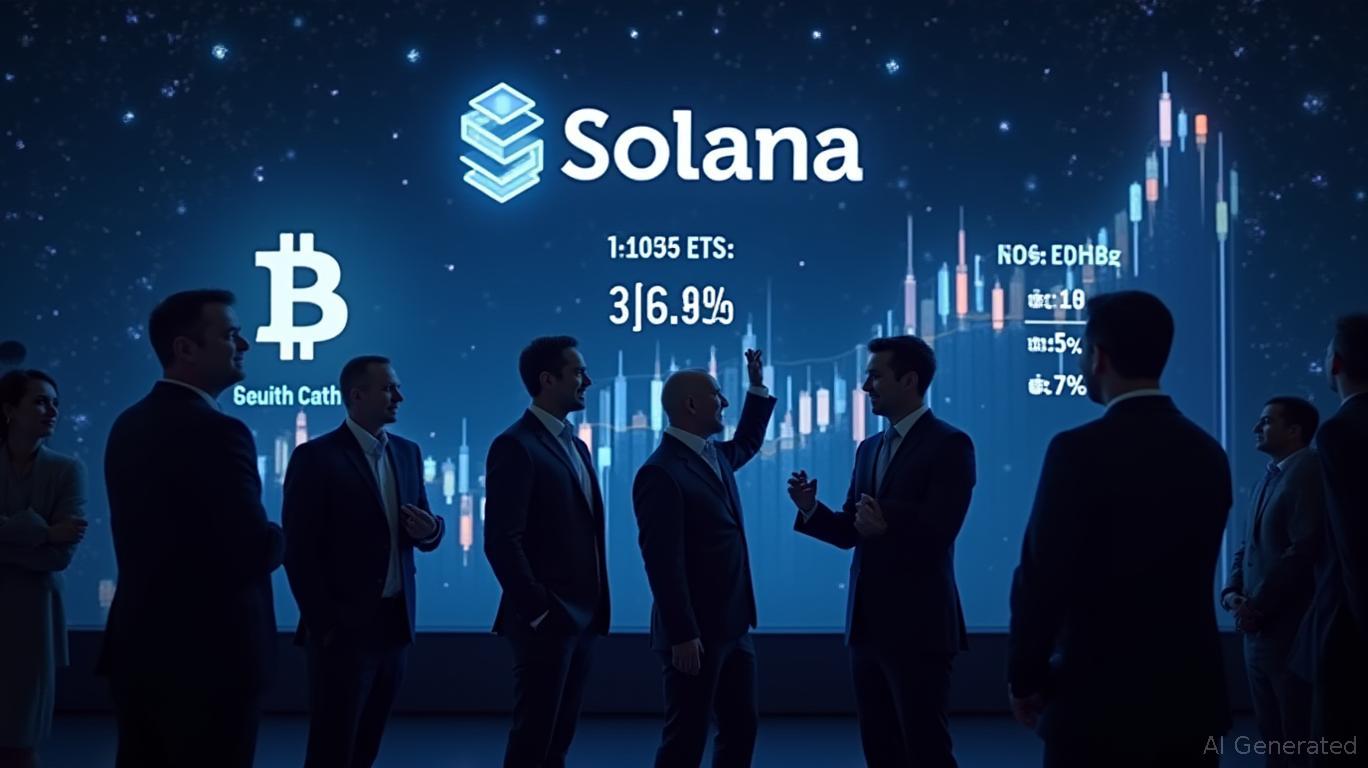ZKP Resolves Blockchain’s Dilemma by Aligning Developer and User Rewards
- ZKP's dual-flywheel strategy targets mass blockchain adoption by simultaneously incentivizing developers and users to overcome the "cold start" challenge. - Developer grants and user-friendly SDKs aim to accelerate DApp deployment, while simplified wallets and education tools lower barriers for mainstream privacy adoption. - The synergy between application growth and user engagement creates a self-reinforcing network effect, addressing the chicken-and-egg dilemma of blockchain adoption. - An upcoming whi
Zero Knowledge Proof (ZKP) is leveraging a dual-flywheel approach to accelerate widespread adoption, aiming to energize both developers and users at the same time. This privacy-first blockchain initiative is structured for swift ecosystem expansion. According to
The initial flywheel is centered on developers. ZKP is rolling out generous grant programs and supplying accessible SDKs to minimize technical hurdles. This initiative is crafted to draw a diverse pool of builders, from DeFi pioneers to experts in digital identity, to contribute to the ecosystem. By focusing on easy-to-use development tools and financial rewards, the project aims to speed up the rollout of varied applications, ensuring the network is robust and attractive as it gains momentum. As highlighted in the roadmap, "Developer incentives and easy-to-use SDKs spark a surge of creative DApps," laying a strong groundwork for user participation.

The second flywheel is geared toward end-users. Acknowledging that ZKP’s advanced cryptographic technology might be daunting for those without technical backgrounds, the project is emphasizing educational initiatives and user-friendly design. Streamlined wallets and clear guides are being developed to make privacy features more accessible, aiming to bring these benefits to a broader audience. By making onboarding simpler, ZKP hopes to shift privacy from a specialized interest to a mainstream expectation. The report notes, "Educating users and offering intuitive wallets makes it easier for the general public to get involved," which is essential for scaling the platform.
The interaction between these two flywheels is what propels ZKP’s growth strategy. As developers launch new solutions—such as confidential DeFi services or secure logistics platforms—users find compelling reasons to join. This uptick in user engagement, in turn, draws more developers, creating a reinforcing cycle that fuels expansion. This dual-sided tactic tackles the classic network adoption puzzle: developers need a user base, while users seek valuable applications. The roadmap emphasizes this mutual reliance, stating that "a growing user base expands the market and demand, attracting even more developers."
A significant milestone for ZKP will be the opening of its whitelist, granting early adopters access at introductory rates. As described in the report, this gives participants the chance to secure their position before the network’s value potentially rises with broader adoption. The team describes this as an opportunity to "reserve future-ready bandwidth" in an environment where privacy and scalability are becoming increasingly important. With its advanced zk-SNARK and zk-STARK protocols, ZKP is well-placed to meet the rising need for secure, decentralized systems.
This dual-flywheel strategy marks a shift from conventional blockchain growth models, which often focus on just one segment of the ecosystem. By aligning incentives for both developers and users, ZKP seeks to build a durable, self-sustaining network. As the project approaches its whitelist launch, its success will depend on delivering both technological breakthroughs and strong community involvement.
Disclaimer: The content of this article solely reflects the author's opinion and does not represent the platform in any capacity. This article is not intended to serve as a reference for making investment decisions.
You may also like
Bitcoin Updates: Swiss Crypto Lending Offers 14% Returns Alongside Bank-Backed Insurance
- Swiss crypto lender Fulcrum offers 14% APR on stablecoins with Lloyd's insurance and FINMA regulation. - Platform uses 50% LTV over-collateralization and institutional-grade security to mitigate market risks. - Targets inflation-hedging investors by bridging traditional finance gaps with insured crypto yields. - Competes with alternatives like Bitget's zero-interest loans but emphasizes regulatory compliance and capital preservation.

Bitcoin News Update: Analyst Highlights How MSTR's Convertible Bonds Prevent Forced Bitcoin Sales
- MSTR's convertible debt structure allows debt repayment via cash, stock, or both, avoiding Bitcoin sales during market downturns. - The company raised €350M through a 10% dividend-bearing euro-denominated preferred stock offering to fund Bitcoin purchases. - Q3 results showed $3.9B operating income from Bitcoin gains, driving a 7.6% stock surge to $273.68 post-earnings. - Risks persist if Bitcoin fails to rally in 2028, potentially forcing partial liquidation amid $1.01B 2027 debt obligations. - MSTR hol

Solana News Today: Solana ETFs Surpass Bitcoin as Staking Returns Attract Institutional Investments
- U.S. spot Solana ETFs (BSOL/GSOL) attracted $199M in 4 days, outperforming Bitcoin/Ethereum ETF outflows. - 7% staking yields drive institutional inflows as investors rotate capital from major crypto assets. - Despite ETF success, SOL price fell below key support levels, raising concerns about $120 price floor. - Strategic staking and treasury purchases boosted Solana's institutional appeal, with $397M in staked assets. - Market remains cautious as ETF competition intensifies, with Bitwise's BSOL outpaci

Bitcoin News Today: Bitcoin’s Fourth Quarter Surge: Impact of Trade Disputes, Stronger Dollar, and Evolving Global Economic Strategies
- Bitcoin fell nearly 15% in October 2024, its worst quarterly start since 2022, driven by U.S.-China trade tensions, dollar strength, and macroeconomic caution. - A 100% U.S. tariff on Chinese imports and Fed rate-cut delays exacerbated selloffs, triggering $1.3B in liquidations during a flash crash below $103,000. - Key support levels at $107,000 and $101,150 face retests as traders warn of further declines, with market cap dropping below $3.6T amid fragile liquidity. - Wintermute denied Binance lawsuit
